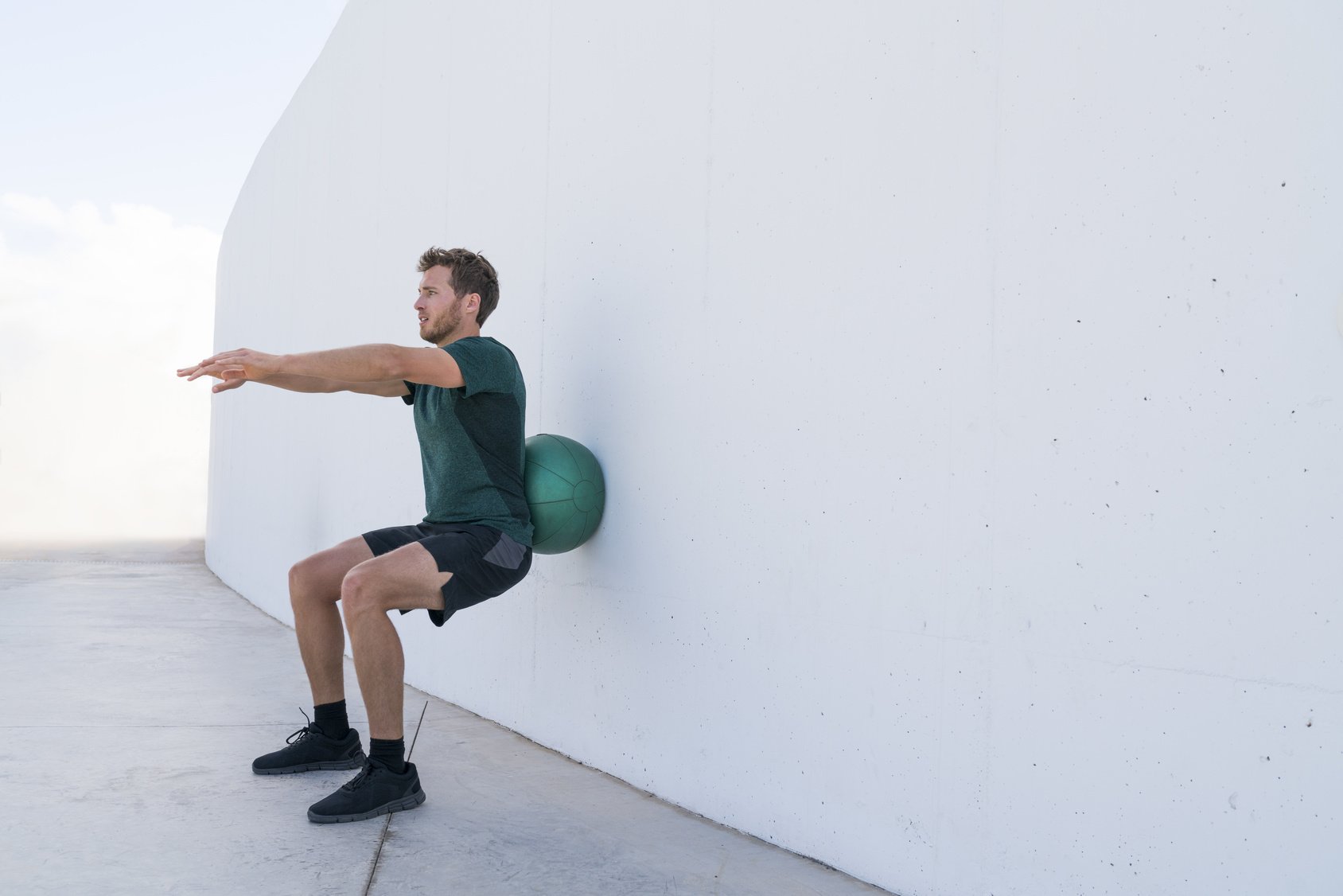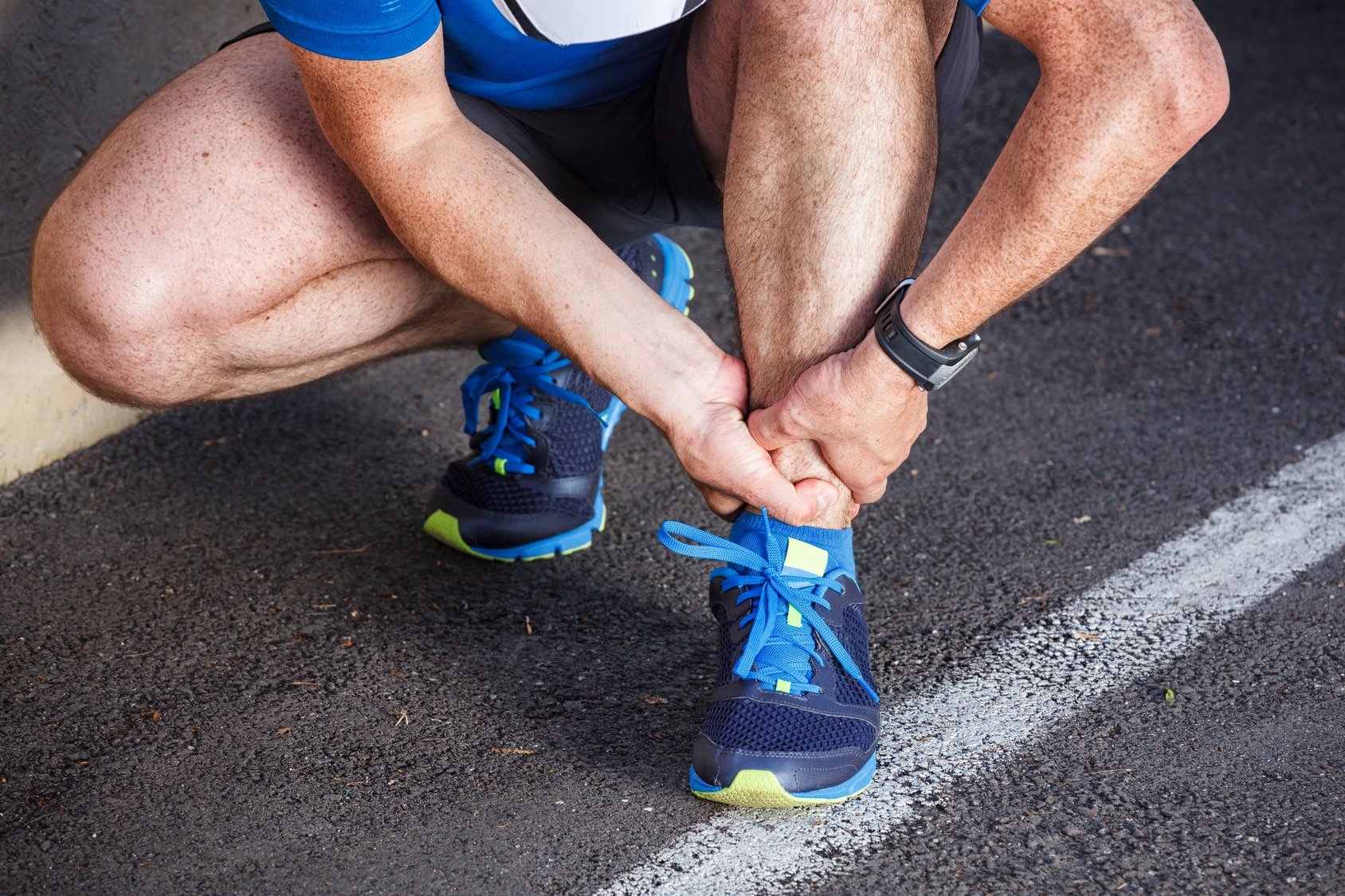Looking to turbocharge your cross-training efforts as a runner? Then, it’s time to add medicine balls into your running program.
Imagine having a versatile tool at your disposal—one that not only enhances your athletic performance but also enables you to cultivate explosive power while targeting your core muscles simultaneously. That’s where medicine balls come into play.
These weighted marvels are tailor-made for explosive movements, granting you the ability to toss, catch, and unleash your inner athlete. Whether you’re a beginner runner or a ultra athlete looking for the next edge, medicine ball exercises hold the key to a stronger, fitter version of yourself.
But here’s the most thrilling part: you don’t need an elaborate gym setup to get started. All that’s required is a medicine ball and a bit of space, setting you on a path that will challenge every muscle group in your body, get your heart racing, and leave you invigorated.
In this article, I’m sharing with you the full guide to medicine ball training for runners. More specifically, I’ll be explaining what med balls are all about, the benefits, and the must-do exercises to perform if you’re looking to improve your running performance.
Sounds like a good idea?
Let’s get started.
What is a Medicine Ball?
Did you know that medicine balls have been in use for thousands of years? Ancient Greek athletes wielded these weighty orbs for strength training, akin to the early Olympians preparing for their legendary competitions.
Fast forward to the present day, and the medicine ball has transformed into a versatile tool cherished by fitness enthusiasts and athletes alike. They come in various weights, sizes, and materials, each serving its distinct purpose.
You’ll encounter the classic leather varieties, bouncy rubber renditions, and even those equipped with handles, reflecting the diversity of the runners who employ them.
Selecting the right medicine ball parallels choosing the perfect pair of running shoes – it should align with your workout style.
If you’re new to this, opt for a lighter ball, perhaps in the range of 4 to 6 pounds. For seasoned athletes, going for a heavier ball, say 10 to 12 pounds, might be your preference.
And what about size? Size matters, too.
A larger ball proves ideal for exercises like overhead throws, while a smaller one shines in movements like Russian twists. Material also plays a role – rubber balls excel in bouncing exercises, while the softer leather or vinyl counterparts are suited for partner workouts.
The Benefits of Medicine Ball Training for Runners
Medicine ball exercises are a dynamic and effective way to enhance fitness, with various scientific studies supporting their benefits:
Enhanced Core Strength:
A study in the “Journal of Sports Science & Medicine” (Saeterbakken et al., 2014) confirms that medicine ball exercises effectively boost core muscle activation and strength. This makes them a valuable addition to core-strengthening routines.
A strong core serves as the powerhouse of your running form, the central command center where all your running power is coordinated. Core strength is your stabilizer, ensuring each stride is as efficient as possible.
Improved Muscular Power:
Research in the “Journal of Strength and Conditioning Research” (Smith et al., 2002) highlights the impact of medicine ball exercises on muscular power. These exercises, involving explosive movements with a weighted ball, have been shown to significantly increase power output in athletes.
Improved Stability
Medicine ball workouts are like a perpetual balancing act, constantly challenging your stability. For us runners, this is a game-changer because, let’s be honest, we’re not always on perfectly flat and predictable terrain. Whether it’s dodging potholes or navigating rugged trails, a stable core is our ticket to staying injury-free and maintaining smooth, uninterrupted runs.
Versatility:
Medicine balls are adaptable for a wide range of fitness levels. Studies, including one from the “Journal of Sports Science & Medicine” (Chin et al., 2012), have shown that medicine ball exercises can be modified for different skill and strength levels, making them accessible to a broad audience.
Efficient Workouts:
Finally, the efficiency of medicine ball workouts is well-established. A study in the “Journal of Sports Science & Medicine” (Otto III et al., 2012) compared the energy expenditure of medicine ball exercises with traditional resistance training, concluding that medicine ball workouts offer a time-efficient way to achieve similar energy expenditure and perceived exertion.
Instructions
To make the most out of medicine ball training, make sure to follow these guidelines:
Choose The Right Weight:
Go for a medicine ball that challenges you without compromising your form. A weight that allows you to complete 12 to 16 repetitions of each exercise with proper technique is ideal.
Maintain a Continuous Flow:
To keep your heart rate elevated and optimize the effectiveness of your workout, transition smoothly between exercises with minimal rest. This continuous movement helps build endurance and burn more calories.
Strategic Rest Period:
After completing a circuit of exercises, take a well-earned break of one to two minutes. Use this time to catch your breath, hydrate if needed, and mentally prepare for the next round of exercises.
Proper Form is Key: Focus on executing each exercise with the correct form and technique. Avoid rushing through movements, as this can lead to injury. Quality repetitions are more valuable than quantity.
Progress Gradually:
As you become more proficient, gradually increase the weight of your medicine ball to continue challenging yourself and making progress in your fitness journey.
Listen to Your Body:
Pay attention to how your body responds to the exercises. If you experience pain or discomfort beyond the usual burn of a workout, stop and assess your form or consider using a lighter weight.
By following these guidelines, you’ll maximize the benefits of your medicine ball exercises. This approach will help you build strength, improve cardiovascular fitness, and get the most out of your workout.
So, grab your medicine ball, and let’s begin!
Top 7 Medicine Ball Exercises For Runners
Without further ado, here are the med ball moves you need in your running life.
1. Medicine ball toss
- Find a Partner: Choose someone who’s ready to move and have fun.
- Face Each Other: Stand about an arm’s length apart, facing your partner.
- Get Moving: Start shuffling your feet, like a little dance, to stay active.
- Pass the Ball: Grab the medicine ball, toss it to your partner, and be ready to catch it when it comes back.
- Keep It Going: Repeat this back-and-forth toss for 12 to 16 reps. It’s excellent for your upper body and enhances hand-eye coordination and reaction time.
- Level Up: If it gets too easy, try a heavier medicine ball for an extra challenge
2. Diagonal Chop
- Stand Tall: Begin with your feet shoulder-width apart. Hold the medicine ball beside your ear with both hands, gripping it firmly.
- Ready to Chop: Imagine you’re holding an axe, keeping your back straight, and engaging your core for stability.
- Chop It Down: Lower the medicine ball diagonally across your body as if you’re chopping wood in that direction. Feel the twist in your core.
- Power Up: Explosively bring the ball back to the starting position, engaging your core and getting a full-body workout.
- Switch Sides: Repeat for the desired number of reps, then switch to the other side to work both sides of your core evenly.
- Keep It Controlled: Maintain control, especially when returning to the starting position, to engage your muscles effectively.
3. The Three Medicine Balls Push-up
- Start by placing three medicine balls on the ground around your body.
- To maintain balance, engage your core muscles and squeeze your inner thighs together.
- Position your hands on the two medicine balls, ensuring your palms are flat on them.
- Rest your toes on the third medicine ball, keeping your feet close together for balance.
- Lower your chest toward the ground while keeping a straight line from head to heels.
- Engage your chest, shoulders, and triceps as you push back up to the starting position.
- Focus on controlled movements throughout to challenge your stability.
- Complete the desired number of repetitions while maintaining balance and proper form. Increase the challenge over time by adding more reps or sets.
4. Suitcase Crunch
- Lie flat on your back on an exercise mat with your legs fully extended.
- Hold a medicine ball with both hands, arms extended overhead just slightly above the ground.
- Engage your core muscles by pulling your belly button toward your spine.
- Lift your torso off the ground while simultaneously bending your right knee toward your chest. Bring the medicine ball toward your right foot in a twisting motion.
- Reverse the motion to return to the starting position, lowering your torso back to the ground and extending your right leg fully.
- Repeat the same motion on the left side, bending your left knee toward your chest and twisting to reach your left foot.
- Each repetition involves performing the exercise on both sides.
- Aim for your desired number of repetitions while maintaining proper form and controlled breathing. Exhale as you crunch, and inhale as you return to the starting position.
5. Toe Touch
- Lie on your back on an exercise mat with your legs straight up in the air, feet together. Hold a medicine ball with both hands, arms extended toward the ceiling.
- Engage your core muscles.
- Lift your torso off the ground while simultaneously reaching the medicine ball toward your toes. Try to touch your toes with the ball.
- Keep your legs straight and feet together as you lift your torso and reach for your toes. Maintain core engagement.
- Hold the position briefly, focusing on squeezing your abdominal muscles.
- Slowly lower your torso and the medicine ball back to the starting position while keeping your legs straight and elevated.
- Exhale as you lift your torso reach for your toes, and inhale as you return to the starting position.
6. Russian Twists
- Sit on the ground with knees bent, heels on the floor, and back straight. Hold a medicine ball with both hands, arms extended in front, and feet hip-width apart.
- Engage your core muscles to stabilize your spine and protect your lower back.
- Slowly rotate your torso to the right as far as possible while holding the medicine ball. Keep your arms extended as you tap the ball on the floor beside your right hip.
- Pause briefly and squeeze your oblique muscles on the right side.
- Rotate your torso to the left side without stopping, moving the medicine ball to the other side. Tap the ball on the floor beside your left hip.
- This completes one repetition. Repeat the twisting motion from right to left and back to the right for the desired number of reps or time intervals.
- Exhale as you twist to each side, and inhale as you return to the center position.
7. Medicine ball V-up
- Lie on your back with your legs straight, and arms extended above your head, holding a medicine ball with your palms facing up.
- Engage your core muscles to stabilize your spine and protect your lower back.
- Lift your upper body and legs off the ground while bringing the medicine ball toward your feet, creating a “V” shape with your torso and legs.
- Hold this position for a count of three, focusing on contracting your abdominal muscles.
- Slowly lower your upper body and legs back down to the starting position while maintaining control over the medicine ball.
- Remember to exhale as you lift your torso and legs and inhale as you lower them. Aim for 15 to 20 repetitions per set, adjusting as needed based on your fitness level and goals.
Integrating Medicine Ball Workouts into Running Training
Here’s how you can seamlessly blend medicine ball training into your running schedule:
Blending Medicine Ball Workouts with Running:
- Frequency: Aim for 2-3 sessions of medicine ball exercises per week. This approach boosts your running routine without overwhelming your body.
- Timing Around Runs: Use a brief medicine ball session as a dynamic warm-up before running or as a strength-focused cooldown afterward. This is like fine-tuning your body before a run or easing it down post-run.
- On Non-Running Days: Alternatively, you can dedicate days when you’re not running to focus solely on medicine ball exercises. This method keeps your muscles active and enhances your overall fitness, similar to cross-training.
Duration and Intensity of Workouts:
- Length of Sessions: Opt for 15-20 minute sessions. Focus on the effectiveness of your workout rather than the duration, mirroring the importance of quality over quantity in running.
- Adjusting Intensity: Start with a lighter medicine ball and increase the weight as you grow stronger, akin to progressively increasing your running distance.
- Listen to Your Body: As with running, be attuned to your body’s response to the exercises. Adjust the intensity if necessary – your body’s feedback is crucial.
Sample Weekly Running and Medicine Ball Plan:
- Monday: Easy run followed by a 15-minute medicine ball routine.
- Tuesday: Rest or engage in light cross-training.
- Wednesday: Interval running paired with a 20-minute medicine ball workout.
- Thursday: Rest day or gentle yoga for recovery.
- Friday: Long run to build endurance.
- Saturday: Focus on core and strength with a dedicated medicine ball session.
- Sunday: Rest or engage in active recovery activities.







